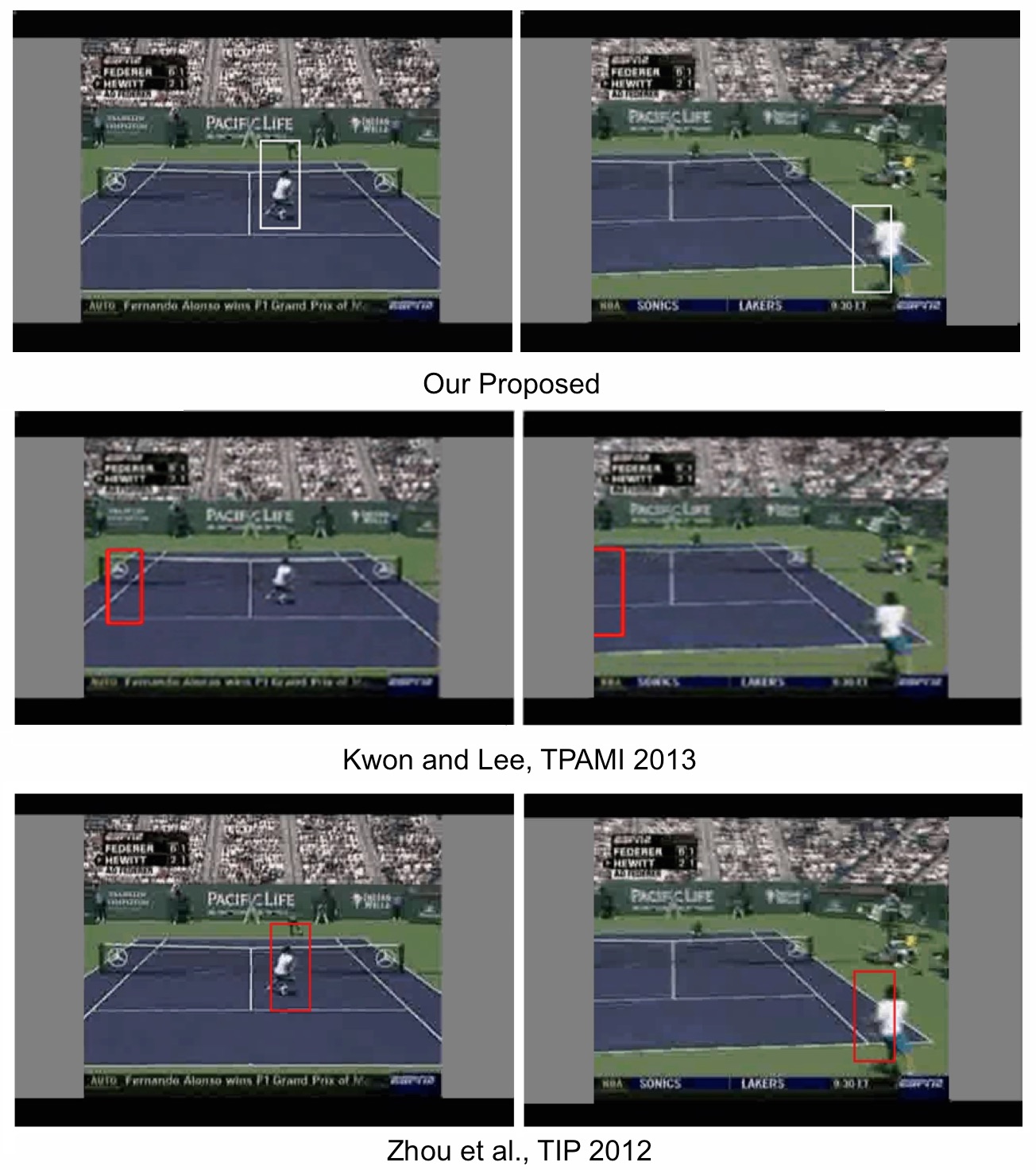Refined Particle Swarm Optimisation Method for
Abrupt Motion Tracking
Abstract: Conventional tracking solutions are not able to deal with abrupt motion as these are based on a smooth motion assumption or an accurate motion model. Abrupt motion is not subject to motion continuity and smoothness. We address this problem by casting tracking as an optimisation problem and propose a novel abrupt motion tracker based on swarm intelligence – the SwATrack. Unlike existing swarm-based filtering methods, we first of all introduce an optimised swarm-based sampling strategy for a tradeoff between the exploration and exploitation of the state space in search for the optimal proposal distribution. Secondly, we propose Dynamic Acceleration Parameters (DAP) that allow on the fly tuning of the best mean and variance of the distribution for sampling. Combining the two strategies within the Particle Swarm Optimisation framework represents a novel method to address abrupt motion. To the best of our knowledge, this has never been done before. Thirdly, we introduce a new dataset – the Malaya Abrupt Motion (MAMo) dataset that consists of 12 videos with groundtruth. Finally, experimental on both quantitative and qualitative results have shown the effectiveness of the proposed method in terms of dataset unbiased, object size invariant and fast recovery in tracking the abrupt motions.
Journal Paper: Information Sciences, vol. 283, pp. 267-287 (INS 2014)
Refined Particle Swarm Optimisation Method for Abrupt Motion Tracking
Mei Kuan Lim, Chee Seng Chan, Dorothy Monekosso and Paolo Remagnino
Conference Paper: Proc. of IAPR Conference on Machine Vision Applications, pp. 37-40 (MVA 2013)
SwATrack: A Swarm Intelligence-based Abrupt Motion Tracker
Mei Kuan Lim, Chee Seng Chan, Dorothy Monekosso and Paolo Remagnino
Dataset and Code:

A newly introduced abrupt motion dataset - namely the Malaya Abrupt Motion (MAMo) dataset. This dataset comprises 12 videos that exhibit different challenging scenarios.
Details and Download ...Paper Highlights:
- A novel abrupt motion tracker based on swarm intelligence - the SwATrack. It has the advantages of invariant to dataset, object size as well as fast recovery from failure.
- We discuss will continued progress in visual tracking be driven by the increased complexity of tracking algorithms? This is raised by a recent paper in BMVC2012 - "Motion Models that Only Work Sometimes". In order to investigate if these intuitions hold true, we perform experiments using an increasing number of samples and iterations (Sampling- based vs. Iterative-based solutions).
- A new dataset - the Malaya Abrupt Motion (MAMo) dataset that consists of 12 videos with groundtruth.
Qualitative Results: These are the abrupt tracking results for video sequence Malaya_{2-4} with our proposed method. It can be visualised that the capability of the proposed system to track multiple targets (the two simulated balls are moving at random speed); whilst most of the existing solutions are focused on single target.
Benchmark Results: The first video shows the comparison between our work, A-WLMC (Kwon and Lee, TPAMI 2013) and IA-MCMC (Zhou et al, TIP 2012) using the tennis video sequence (low frame rate), the second video is the comparison between our work, conventional particle filter (PF) and conventional particle swarm intelligence (PSO) using the Table Tennis video sequence, and the third video is the complete results of our proposed method in the tennis video sequence (low frame rate).

Acknowledgement
This research is based upon work supported by the High Impact Research Chancellory Grant UM.C/625/1/HIR/037, J0000073579 from the University of Malaya. Any opinions, findings, and conclusions or recommendations expressed in this material are those of the author(s) and do not necessarily reflect the views of the University of Malaya.